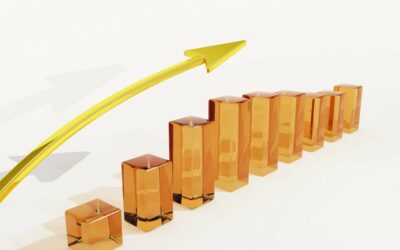Mobeen Tahir, Associate Director, Research, WisdomTree explores what lessons investors can glean from all that has happened in a year since the pandemic caused an implosion in markets.
1. Theoretical risks can become real
“How low can the price for a barrel of oil be? Turns out the answer is not even zero, it is negative something – since there is no actual lower bound. West Texas Intermediate (WTI) oil futures crashed deep into negative territory in April last year defying conventional wisdom, and even intuition. It was a theoretical risk only possible in a rather implausible scenario. Nonetheless, it was possible which is why it happened. The lesson, therefore, is that while market volatility can create opportunities, deploying capital means taking risks. Things don’t always work in your favour, but an awareness of the risks involved can help investors make informed decisions.
2. Market’s disconnect with economics
“Is it reasonable for stock markets to reach new record highs amid a global health and economic crisis? Much has been said in the last twelve months about the disconnect between Main Street and Wall Street. We also cautioned against irrational exuberance last year. But while the two streets ought to have a connection, it is perhaps not entirely reasonable to expect them to always move in tandem.
“Economic data such as that for growth, inflation, and unemployment presents the reality as it stands. Asset markets, in contrast, price in future outcomes. The future is a conglomeration of fears, apprehensions, and equally, hopes and dreams. The bull equity market since March last year may partly have been driven by the strength in certain sectors but was also fueled by humanity’s hope of overcoming the pandemic. Therefore, as objective as market participants might want to be, it is futile to try to disentangle emotion from asset prices.
3. The uneven recovery
“Headline indices reaching record highs can often mask the story underneath. The rally in global equity markets was anything but even across sectors, factors, and geographies. While some tactical investors may have jumped at performance divergence and elevated levels of volatility, strategic investors were probably reminded of the need to diversify. Market timing is not only difficult, but also something most long-term investors do not even aim for. In Navigating equity markets in the year ahead, we introduced a framework to help investors translate questions related to equity markets into a practical portfolio. The need for diversity and balance is even more important when opportunities and risks abound in equal measure, and performance is uneven across market segments.
4. The reflation trade
“The notion of reflation can mean different things to different people. The obvious connotation is an increase in inflation expectations associated with an economic recovery and boosted by policy support. Many investors have started putting hedges in place already with investment tools such as broad commodity baskets with a view that high levels of inflation – that have generally been elusive since the global financial crisis – may finally be seen soon. But reflation may also be something that transpires in asset prices – strong gains in Bitcoin prices are an example. The bottom line, therefore, is that our understanding of reflation, its transmission channels, and ways of measuring it may evolve. Reflation is certainly something for investors to think about, but how they go about it may vary – and that is fine.
5. When good news becomes bad news
“Conventional finance wisdom tells us that equities should generally welcome rising inflation expectations. Nevertheless, the sharp rise in US Treasury yields recently from extremely low levels – driven mainly by rising inflation expectations – made equity markets jittery. Asset market relationships are complicated and sometimes emotions trump logic. There is merit, therefore, in adding robustness to portfolios to withstand both small and large market downturns. Tools such as downside hedges serve as portfolio insurance – they are there when needed. Good news becoming bad news is another facet of how difficult it can be to time markets perfectly.
6. The new face of growth
“Investors are becoming increasingly discerning when it comes to identifying growth opportunities. Seeking investments aligned with megatrends not only promises upside potential, but also offers a longer shelf life. Themes such as the energy transition and virtual connectivity were not just transient phenomena from last year, but structural shifts catalysed by the pandemic. Now, it is worth noting that innovation is not a purely modern phenomenon. When the printing press was invented in the 15th century, it was a type of innovation that changed the world. What is a modern phenomenon, however, is how investors have more options today to gain targeted and transparent exposures to such themes, which is an accelerating trend in itself – and was certainly not there five hundred years ago.
7. From austerity to abundance
“Governments are now all in with their policy firepower and are looking to spend their way out of the current economic crisis. Can fiscal abundance produce a better economic outcome than austerity? We hope so. But there are clear implications of this switch in stance from governments for asset markets. US fiscal stimulus proved pivotal in lifting equity markets last year and may do so again this year. A renewed focus on infrastructure investing is also putting the spotlight on cyclical commodities. The World Economic Forum estimates a $15 trillion global infrastructure gap by 2040. The pandemic may provide governments the impetus to start plugging this gap – something that could have a profound bearing on cyclical assets, particularly industrial metals.
“The pandemic having a lasting impact on markets was perhaps an inevitable outcome. remains to be seen is whether investors will learn from all the lessons on offer from the events of last year. Investing decisions may be altered for years to come but with vaccine programmes continuing to roll out, and be effective, an end to the pandemic is hopefully not too far off.”
Created in 2006, WisdomTree launched the first family of ETFs designed to deliver both cost efficiency and performance potential. Since they have launched many first-to-market ETFs and pioneered alternative weighting methods commonly referred to as “smart beta.”
You can find more information about WisdomTree on its website.





